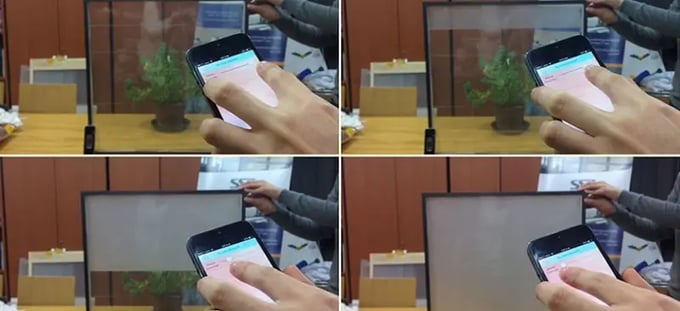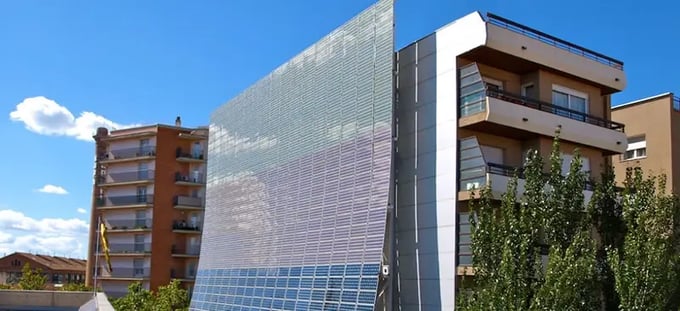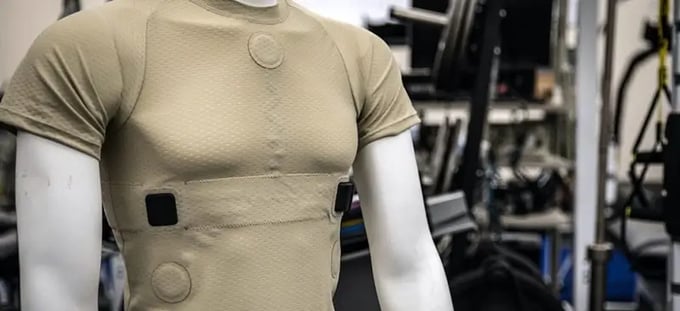Applied Surface Technologies: A Low Cost Solution to Smart Building Construction
Smart surfaces, such as those utilizing applied surface technologies, are a revolutionary technology set that is transforming the built environment.
Smart surfaces are a new technology set that is transforming the built environment. Learn how in this extensive article.
We are approaching a revolution in the way that we construct, manage, and interact with the world around us. Smart surfaces will power this revolution.
In the future, instead of applying technology to the surfaces of our buildings, furniture, and vehicles, the very surfaces that we use to construct these products will be inherently intelligent. Smart surface is a term and an emerging field that combines the materials science of smart materials, the connectivity of IoT, and the promise of big data to make our world more efficient, safe, and liveable. At their most ambitious, smart surfaces promise dynamic, reconfigurable digital control over surfaces in the physical environment.
LAIIER's vision is to power this revolution by developing and scaling the Surface to Cloud connection that makes this future a reality. From sensor to server, LAIIER is leading in the smart surfaces field. To facilitate understanding of this new technology set, we have compiled information and insights from across the industry into the post below. Our goal is to create a shared understanding of what smart surface technology is and how it will change the way that we live, work, and care.
Smart surfaces are any material surfaces that re-arrange their morphology or composition or self-enhances their functionality in response to changes in the ambient environment. ‘Smart surfaces’ is a broad term that encompasses several technologies and technological approaches. Typically, electronic, biological, or chemical functions drive these responses. Unlike smart materials, A smart surface almost exclusively refers to planar technologies. These planar or two-dimensional technologies speak directly to opportunities in industries that are already producing surfaces at scale, such as automotive, aerospace, and construction.
As the definition of Smart surfaces is so broad, many different types of surfaces with as many kinds of performance are often classified together. Smart surfaces can refer to sensors that are applied like paint or heat-reducing coatings as promoted by the Smart Surfaces coalition.
Companies like Yanfeng Automotive Interiors and Fischer Automotive are working on concepts where a seamless surface provides interaction, light, and haptic feedback. Others call this type of technology ‘structural electronics.’ This electronic functionality is important. One of the main drivers behind smart surfaces is the push for big data. By creating an entirely new class of IoT devices, smart surfaces will change the way that we think about taking data from the environment.
Smart surface technologies present a wide range of applications. Still, most development seems focused on three areas, transportation, buildings, and healthcare, with many technical functions shared across these areas. A brief list of applications is below:
Smart surfaces can be constructed in many ways. Some are a contiguous material in a single layer, others are constructed as part of a laminate.
Self-healing paints can be applied in bulk by spraying as a single layer, providing paint protection and repair. But in smart windows, for example, a specialized set of materials is typically sprayed between multiple layers of glass to enable energy generation or automatic window dimming. Some technologies use screen-printed layers to add conductive inks which act as sensor electrodes.

The Vitwell smart window pictured above can produce different levels of opacity, which can be controlled by a smartphone or other electronic device.
The outputs of smart surfaces are as varied as their composition. Smart surfaces can generate energy, measure environmental variables, protect against corrosion, detect water leaks, perform real-time counting of occupants in an office, or help control the temperature of a building. But in almost every instance, the goal of smart surfaces is to reduce weight, space, cost, or complexity. Whether integrating functions into a single component for an automotive interface or reducing drag on a submarine to reduce input power by 10% - 20%.
Though playful, the trend of interactive walls using sensors that respond to touch and proximity is a tangible and visceral example of smart surface technology. Unlike virtual reality or augmented reality, smart surfaces aim to enhance the surfaces that we interact with directly.
As smart surfaces become widely deployed, they will likely play a significant role in the roll-out of IoT and the drive for big data. Information from integrated sensors will provide insights into how we use spaces and products, likely contributing to the generalized artificial intelligence and big data effort, which is touching many aspects of our lives already.
They will unlock entirely new form factors for devices and possibly leapfrog us past the current semantic confusion around ‘smart’ vs. ‘connected’ vs. ‘IoT’ and help deliver a world where the focus is on the value that a product or surface creates, rather than on its nomenclature.
The innovation within smart surface technology comes from the challenge of taking functionality that is typically reserved for bulky add-on devices, integrating it, and making it thin and scalable. This physical transformation opens up the possibility to bring smart surfaces to entirely new use cases and scales where traditional sensors wouldn’t be appropriate.
Complementary innovations like long-range, low-power wireless communication, high-performance antennas, battery technologies, machine learning, and artificial intelligence help us leverage smart surface technology’s ultimate capability. In our offices, light switches are mounted to walls to control lights. In the future, the wall itself will become a light switch, an occupancy monitor, a water leak monitor, and more. This new reality will quietly incorporate technology into the spaces around us, creating dynamically configurable, programmable surfaces.
The challenge of implementing smart surfaces comes primarily from manufacturing, integration, and certification. It is easy to envision an infinitely scalable smart surface technology, but the reality is different.
Smart surfaces frequently require a new set of materials and processes that are not part of the existing supply chain. Integrating surface technologies requires divergent thinking about design and engineering, requiring new connectors and design methodologies, for which there is little current information or reference designs.
Some smart surfaces require specific surface finishes or design affordances that many designers won’t have worked with previously.
Finally, smart surfaces can present a certification challenge. They are proposing new products and radical form factor changes for existing products. Compliance testing is effective at testing products that already exist but frequently struggles to classify the safety and efficacy of radically different products.
The limitations and restrictions of testing are essential to keep in mind when considering whether to integrate smart surface technologies into a new product. In the case of companies like Yanfeng Automotive, these challenges might be the reason for a long R&D phase. At LAIIER, we view these mechanical and electrical challenges as a valuable source of intellectual property and a driver of innovation.
Smart surfaces have already changed our daily lives, from the useful, like whiteboard paint, to the profound, like biocidal coatings that help control hospital-borne infections. These innovations are well-positioned to respond to rising challenges like the coronavirus pandemic through biocidal surface finishes, hygienic interfaces, or real-time cleaning monitoring.

Workers cleaning barnacles off of ship hull with high-pressure water. Biocidal coatings may help to reduce barnacle build-up (and other fouling), increasing efficiency and reducing fuel consumption.
Smart surfaces are already making our daily lives easier through multiple applications. Most of us are already benefiting from smart surfaces, but we probably aren’t aware of it.
We can find practical examples in the coatings used on consumer products and within the built environment. In the home, non-stick coatings cover our cookware, helping to make cooking and cleaning easier. In our pockets, our smartphones have smart surfaces in the form of touch screens and advanced materials that repel fingerprints and protect against breakage. In our children’s schools, we find smart whiteboards, and in our offices, we might have a wall of whiteboard paint.
Though they aren’t all ‘smart’ in the same technical sense, they are marketed as and viewed by the user as planar technology, which transforms the way we live and work. For healthcare professionals, the role of smart surfaces is even more significant, helping to save lives and control costs every year by reducing hospital-acquired infections.
To date, smart surface technology has not dramatically changed infrastructure. Still, the next few years are likely to see a significant shift and many new applications. Smart surfaces will drive IoT growth, especially in areas where smart surfaces are particularly suited.
In this context, the coronavirus pandemic provides a potential inflection point and a new reality for the growth of these surface technologies. Products like the coatings developed at the University of Hong Kong provide up to 90 days of antiviral protection for COVID-19 and associated viruses. Kastus, CytaCoat, BioCote, and NanoSeptic already have or seem to be developing similar products.
Some of the most exciting biocidal smart surface work involves surfaces that can be programmed to kill different types of bacteria, dynamically switching between different chemical expressions.
COVID-19 will likely propel smart surfaces into the public eye. These innovations will change health care and have a considerable impact on the world, especially in dense populations.
But outside of antiviral materials, there are several infrastructure-level changes that we will see from this new technology set. An example is an MIT project called RFocus in February 2020 MIT announced a smart surface composed of low-cost printed antennas which improved the signal strength of a smartphone by 1000%. The concept is to use large panels of antennas to maximize the signal strength at the receiving mobile device.
The idea is compelling in that it takes advantage of the large surface area available in commercial buildings. It does not create any requirements for sophisticated new equipment. This concept isn’t new, however. The idea of Intelligent Reflecting Surfaces (ISR) is reasonably well-established as a concept for creating high-speed, wireless connectivity by recycling and reconfiguring those that already exist in the environment.
The signal strength provided by ISRs should allow small devices like medical wearables to backscatter their data to local phones with little to no power requirement. This signal strength would enable a much more comprehensive range of devices, which are convenient for the user. Additionally, ISRs might help to boost long-range signals, allowing network providers to serve areas that were previously un-servable.
Another infrastructure-level application for smart surfaces is in maritime logistics. Ships are subject to marine fouling when organisms such as barnacles attach themselves to the ship hull, reducing efficiency by as much as 30%. Current antifouling coatings are not generally effective and frequently use materials that are understood to be toxic to marine life. As such, there is significant research into how smart surfaces can help to prevent, measure, and deter marine fouling.

Museum of Science and Technology of Catalonia has a facade that is constructed almost exclusively of photovoltaic panels, creating an architect.
Smart surfaces will eventually impact almost every industry, from driverless cars to robotics to renewable energy. Some of the world’s leading companies are aggressively pursuing new smart surface technologies and applications.
Not surprisingly, investment in smart surfaces remains strong. Large corporates like Johnson Controls, Faurecia, Henkel, and Dupont are making serious investments in internal R&D and startups. They recognize the opportunity in digital transformation and big data. Cardinal Glass signed a partnership agreement with Click Materials to to scale the production of a unique electrochromic glass product.
This partnership will create sizeable competition for View inc, which has raised over US$1B in pursuit of its smart glass technologies. The interest from large corporates is driven by a global desire to digitize traditional business and near-term fears about the commoditization of profitable products. Without investing in internal R&D, investing in (or acquiring) startups, these firms will struggle to maintain their market position.
Smart surface technology benefits from advancements in other fields such as chemistry, manufacturing, semiconductors, wireless communication, and batteries. Smart surfaces should be viewed as a component of a broader drive to create smart buildings, smart transportation, and smart cities. As the world’s population grows, and we try to build a more equitable society, fight climate change, and reduce the spread of disease, smart surfaces will likely play a quietly crucial role.
Like many fundamental technical shifts, the changes that smart surfaces have precipitated are hard to detect at first. Still, two examples stand out: the rise of the touch screen and the proliferation of wearable devices. The touchscreen is a smart surface in its purest sense, two-dimensional, and highly responsive to environmental stimuli.
As discussed earlier in this piece, it is an example of a part of the physical environment, which is software-controlled. The touch screen is unique among screen technologies in that it is a direct interaction with the content displayed. Likewise, the rise of wearable technology is a powerful signal for the future of smart surfaces.
Smart surfaces make it possible to read biometric information directly from the skin, conforming to the patient’s body, providing a combination of data and comfort that was previously impossible. Within a healthcare setting, smart surfaces help to improve patient outcomes by continually monitoring vital signs with comfortable devices that are accurate and long-lasting. Those innovations around materials and construction have translated to consumer wearables with fitness and lifestyle trackers becoming increasingly more popular.

A compression undershirt called PHYSIO was developed by the US Air Force, which allows continuous monitoring of multiple vital signs while in flight. Smart surface technology makes a seamless interface between skin and electronics possible.
The current development focus for smart surface technologies exists in three sectors: healthcare, automotive and smart buildings.
Surfaces with integrated functions that reduce weight and complexity are a straightforward value proposition for the automotive industry. Companies like TactoTek and Canatu are working on a similar set of technologies they classify as ‘structural electronics.’
Structural electronics describes systems where the electronic or electrical components act as load-bearing and protective structures that would replace otherwise ‘dumb’ structures within an assembly. This integrated approach is potentially powerful as it presents the possibility for low-cost, highly integrated devices with low component weight. TactoTek brands their specific structural electronics technology as Injection Molded Structural Electronics (IMSE).
The name indicates that they believe taking advantage of the injection molding process will unlock scalable production and economies of scale, deliver high-performance electronic performance, and offer wide-design freedom in component shape and materials choice.
The coronavirus pandemic will likely reinforce the ongoing development of smart surfaces within healthcare. Within healthcare, the drive for innovation focuses on biocidal and antimicrobial coatings. This research was initially intended to help control healthcare-associated infections within hospitals. Still, it will inevitably pivot to a broader context as concerns about COVID-19 spread.
According to the WHO, “Healthcare-associated infections, or infections acquired in healthcare settings, are the most frequent adverse event in healthcare delivery worldwide.” Unfortunately, the coronavirus pandemic will likely reinforce this trend. Current research focuses on methods such as light-activated materials which kill bacteria and viruses in the presence of light, and other materials which are inherently toxic to pathogens.
Copper has been long known to be biocidal. Many of the new materials discussed here are trying to create surfaces with a similar or greater performance at a lower cost and more flexibility. Depending on their performance, these materials are likely to be used anywhere possible within a healthcare setting, from floors, walls, furniture, equipment, garments, and more.
Smart buildings present an exciting opportunity for the development of new smart surface technology: scale. For anyone working within smart buildings, the drive is to create solutions that can scale across millions of square feet at a cost that customers can afford.
Embedded intelligence into surfaces is an excellent place to start, and a connection to the paints and coatings industry means that wide-scale use of smart surfaces in buildings is closer than we think. Current developments include self-dimming windows, self-cleaning surfaces, self-healing materials, and smart floors. The current use cases within buildings tend to focus on cost reductions by lowering maintenance costs. Still, future developments will surely increase building efficiency and use.
Smart surfaces will have as profound an impact on our daily lives as the semiconductor has had. The development of microelectronics meant that we could pack more functions into our electronic devices. The development of synthetic materials tends to be mono-functional.
That is, they most frequently fulfil only one set of requirements. The steel girder on a bridge supports the weight of passing cars. The paint coating the beam protects it from corrosion, and the sensors attached to the beam measure its stress and strain. Smart surfaces will make it possible to combine these functions into a single material.
By building a world of smart materials, we’re merely copying something around us that already exists: biology. Rarely in nature do we see mono-functional materials or components. Everything is part of an interconnected system, expected to provide for multiple functions. Thanks to smart surfaces, the built environment will be the testbed for a new, highly interlinked world of materials, electronics, and life.
Smart surfaces will change the way that we interact with and experience the world. As technology blends into the surfaces around us, we will become less aware of its presence. Ubiquitous cameras mounted on the ceilings of offices may give way to smart floors hidden from view.
Bulk sensors attached to walls, desks, and furniture will be built into the materials themselves, unlocking calmer and less cluttered environments. Just as the desktop morphed into the laptop and the smartphone, many aspects of building and automotive technology will shrink and eventually disappear into the surfaces around us.
For someone living in that future, many aspects of their lives will be subtly different. They may wake up in a bedroom with smart windows that begin letting morning sunshine in at a prescribed time. They will shower in a bathroom with seamless controls for every function.
The clothes that they wear will include biometric functions and long-lasting fabrics that repel dirt and require less water to clean. Instead of working from home, they might commute to the office on public transport, where every surface is helping to control the spread of disease. When getting to their office, the smart floor will monitor occupancy, helping to keep the office efficient, safe, and secure.
Choosing a hot desk would be easy. Every desk is coated with a hydrophobic coating and monitors cleaning events and reports them to the building management system. Pollution-absorbing paint keeps the interior of the office healthy and smelling fresh. Integration with social media could turn the desktop into an interface for conversations with friends and family.
During the day, they’ll receive a notification that an elderly relative is awake and walking around the house as usual. But if they fell in the shower or next to the bed, the smart floor would automatically send an alert to a carer and an ambulance if required.
Walking out of the office, they see the concrete sidewalk and remark that it still looks brand new thanks to self-healing concrete. The street trees are flourishing thanks to porous pavements that absorb rainwater and prevent flooding.
Taking a rideshare home, self-healing materials will make the car interior look and feel new. Electronics integrated into the surfaces make it easy to turn on music, roll the window down, or set the climate control.
As they go to bed, they take a few minutes to read a book, with a soft light emitted by the paint on the wall behind their bed. A single touch and the light gently fades off.
Smart surfaces, such as those utilizing applied surface technologies, are a revolutionary technology set that is transforming the built environment.
LAIIER's Surface to Cloud technology empowers global industrial partners, and business owners, to develop smart surface solutions.
LAIIER's vision is to become the 'Intel Inside' of smart buildings, embedding our technology into the structure & infrastructure of the built...
Subscribe to receive our latest news and updates.